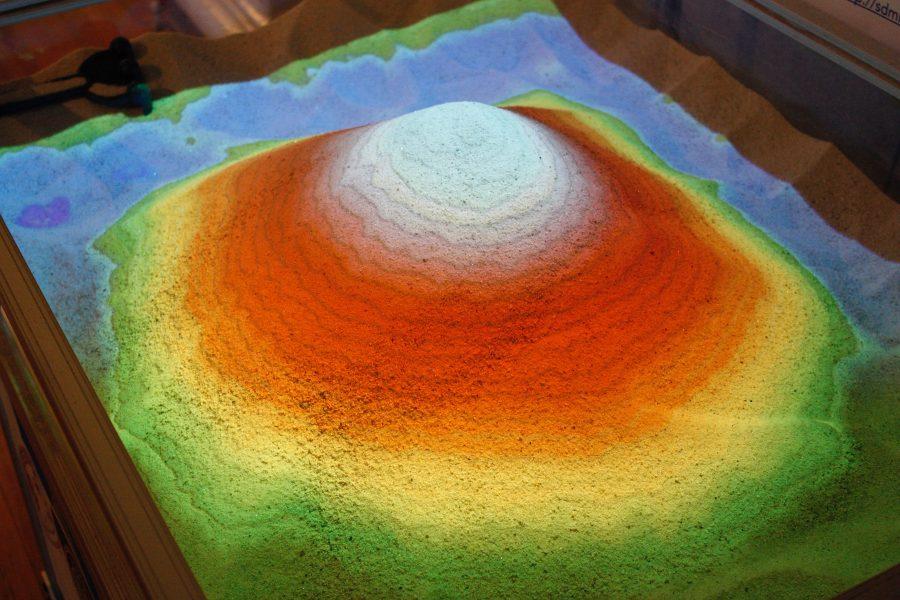The Alabama Museum of Natural History is now home to a new and riveting piece of technology that is changing the way people learn about topographical maps and hydrological processes. The so-called “virtual sandbox” was built by Sagy Cohen, an assistant professor at The University of Alabama, and was funded through the National Science Foundation for his research on global rivers.
The Davis group from the University of California is credited with the general design and the programming of the software. There are only a couple of dozen virtual sandboxes spread throughout the world, but that number is increasing rapidly. According to Cohen, The University of Alabama has the only virtual sandbox in the state.
The device is housed inside of an aluminum frame that was built in the machine shop owned by the College of Arts and Sciences. It is made with an older generation X-box Kinect sensor that senses the topography of the sand. A specific software package then translates that topography to the computer underneath the exhibit. The computer converts the information into the colorful topographical map displayed through a projector. All the technology works together to create an “augmented reality” that allows its participants to experience and interact with the environment.
The virtual sandbox allows users to recreate landscapes and experience how a change in the environment affects water. By raking sand from one side of the display to the other, a user can create flowing rivers and ponds. Hand motions directly above the sand create virtual rainfall, allowing the user to see how rain causes flooding. Users can also manipulate the sand to build dams and experience what happens when they are broken by excess water. Every time a user crafts a new landscape, the technology adjusts the entire topography.
Creators of the technology hope that it serves to teach people two important things. The first is topographical mapping, which is a skill that those in the field fear is quickly dying. Cohen explained that many environmental science majors, as well as geography and geology majors, often find themselves struggling to learn how to read topographical maps. He pointed out that while knowing how to read these maps is an important skill for those majors, it is equally important for anyone who partakes in outdoor recreation, such as hunting or hiking.
“When you can play with it, visualize it, make your own landscape, it is easier then to look at a topographical map and understand,” Cohen said.
Cohen also hopes that the geology and geography departments use the tool as part of their classes. At the very least, he thinks it is a great resource for the students to get some hands-on experience in their field.
The second concept that the virtual sandbox teaches users about is hydrology and hydraulics. “The software that runs the technology has a sophisticated fluid dynamics model,” Cohen Said. These principles explain why motion over the sand generates rain, showing how the water flows downstream.
Cohen was motivated to work on the virtual sandbox because he wanted to make environmental science fun for people who study it and those that do not. “What’s even more important than them learning how to read a topographical map and learning about watersheds is the fact that they see that environmental science is really cool, and maybe they think about taking up a career in that,” Cohen said.
Alabama’s Museum of Natural History and the virtual sandbox are located in Smith Hall. The museum is open Monday through Saturday from 10 a.m. to 4:30 p.m., and all students and faculty can gain free admission with their ACTion card.









